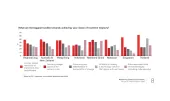Trade finance trends and risks in Singapore you should know about
By Henry BalaniThe Financial Stability Review (FSR)(1) report provides financial institutions a good understanding of the global macro economy and its effect on Singapore-based banks. In particular, the MAS highlights “the banking sector needs to guard against credit quality deterioration and liquidity risks”.
What is particularly significant is the change in the composition of loans where “trade bills overtook interbank loans to become the primary contributor of loans to China”. This statement is not surprising, given the economic growth in China in general and the opening of the Shanghai Free trade zone in October 2013.
Banks have traditionally underwritten trade finance activities and these macroeconomic trends provide food for thought when considering expanding into China. The opening of the Free trade zone in China and the ASEAN-China Free Trade Area (ACFTA) scheduled to take effect in 2015 will significantly boost trade finance activities, there are also inherent risks driven by external regulatory issues, grouped in the following manner:
1) Trade-based money laundering risks
The FSR Report highlights that “as of September 2013, trade bills accounted for 65% of total loans from Singapore to China” . Trade finance activities have traditionally focused on the required documentation to underwrite shipments.
Banks are now starting to review their anti-money laundering policies in addition to the documentary checks.
It is important to understand the link between trade finance and potential money laundering. Goods shipped between countries are typically financed by banks with Letters of Credit (L/C).
Money can be laundered through inaccurate representation of goods on these L/Cs; misrepresentation of the true value of the goods shipped; shipping of prohibited or dual-use goods; unloading of goods at sanctioned ports of calls – all activities that allow integration of illicit funds into the legitimate financial system. If the bank uses the SWIFT network, they may also screen their MT700s for sanctioned entities.
This however is still insufficient and exposes the bank to many risks. There is potential for unusual or inconsistent shipments.
For example, an exporter of toys inexplicably begins shipping raw materials; unusual number of intermediaries or changes in party names; changes to payments to third parties or location mid shipment or inconsistent quantity of goods compared with containers used. All these scenarios are red flags that need to be reviewed by the trade finance department of the bank.
Developing the policy and training procedures to identify these scenarios Developing a knowledge base within the bank is key to ensuring a sound policy. Due diligence is ultimately required.
2) Basel III capital requirements
As indicated in the opening paragraph, the FSR report highlights liquidity risk for banks as a concern. Trade finance activity can be seen to be high risk and tie up capital, resulting in a lower return as an asset class compared to other loan activity.
Given the increased growth of third party trade finance solutions that provide more transparency and reduce risk, banks could be willing to underwrite these activities assuming a greater certainty of return. These solutions are also now able to screen Chinese character trade documents further reducing potential anti-money laundering risks when dealing with Chinese exporters.
Asian banks including Singapore-based banks that have strong capital reserves may find greater opportunities to finance trade activities. Indeed, the FSR report highlights the fact that Singapore, as a regional finance centre intermediates funds to Asia from other regions, with “65% of the banking system’s cross-border loans going towards Asia”.
Banks that do not participate in cross border loans, especially driven by trade finance activity may not be able to provide required financial services to their corporate clients, ultimately losing out on business.
In conclusion, the FSR report paints a fairly comprehensive and positive outlook for Singapore’s economy. Local banks looking to engage in trade finance need to consider the risks against the rewards related to this business activity.
Ultimately, once the risks are well managed, the upside will be beneficial.
Notes:
1) https://www.mas.gov.sg/
2) https://www.fca.org.uk/news/tr13-03-banks-control-of-financial-crime-risks-in-trade-finance




















 Advertise
Advertise










